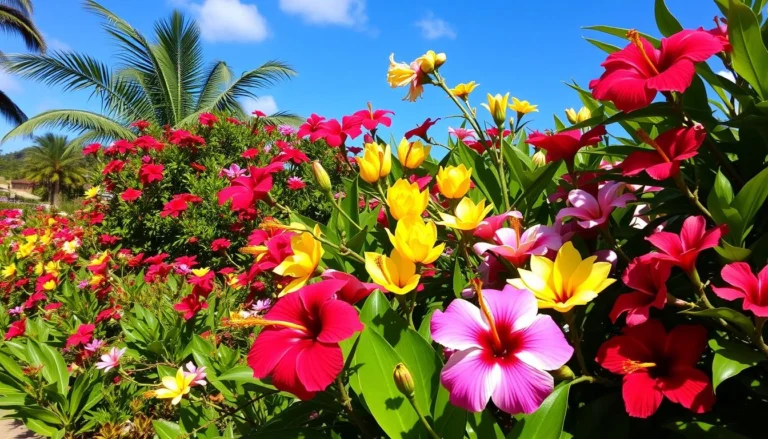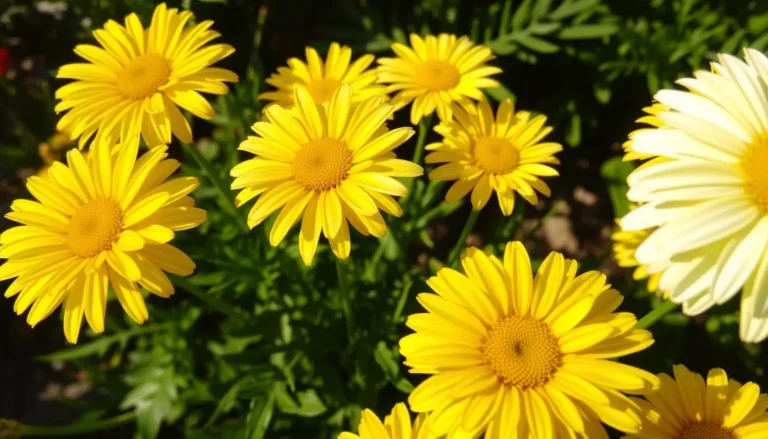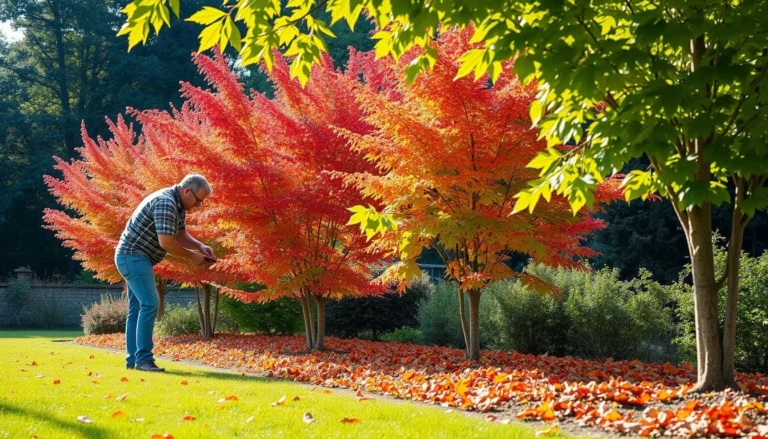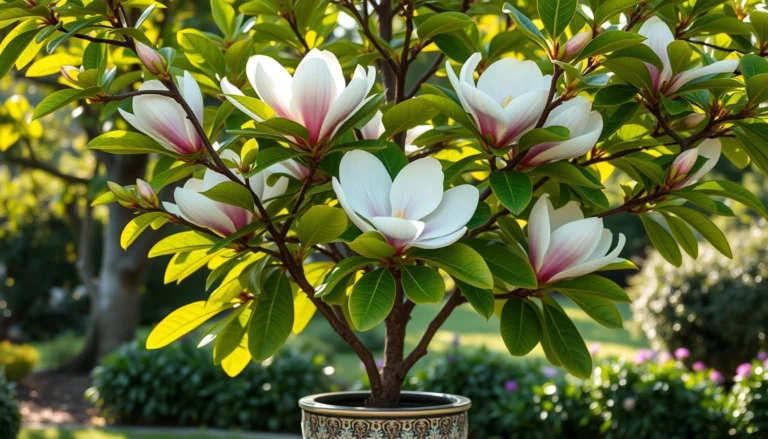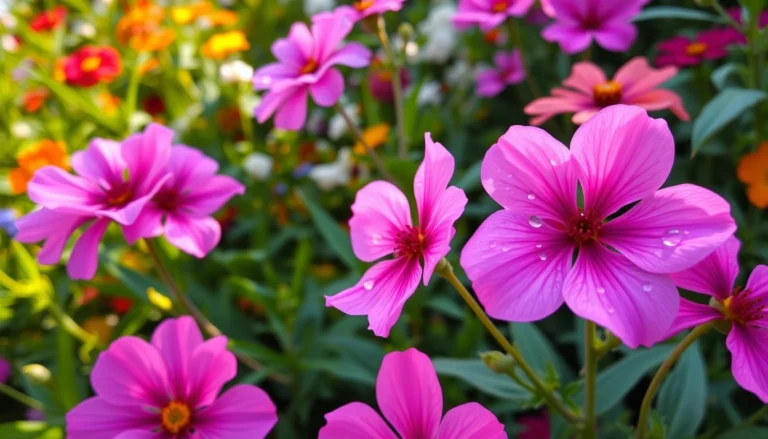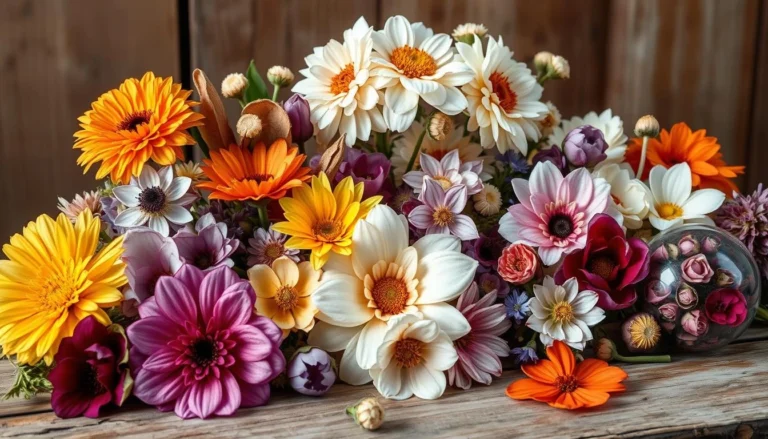“Lavender Plants: 10 Insider Tips to Maximize Growth and Fragrance Like Never Before!”
Ready to turn your garden into a lavender paradise? We’ve got the secrets to grow lush, fragrant lavender plants. Learn how to pick the best varieties, prune, and harvest. This guide will help you achieve lavender perfection1.
Lavender is a stunning perennial herb from the Genus Lavandula1. It’s famous for its purple, blue, and white flowers. This Mediterranean plant is loved for its scent, attracts bees, and has calming effects1. It grows well in zones 5-9, making it perfect for gardens and pots in the U.S12..
Key Takeaways
- Lavender is a drought-tolerant, deer-resistant plant that thrives in full sun and well-draining soil.
- Proper pruning and deadheading techniques promote bushy growth and continuous blooming.
- Lavender varieties, such as English, French, and Spanish, offer unique characteristics to suit diverse growing conditions.
- Caring for lavender in containers requires diligent watering, good drainage, and protection during colder months.
- Harvesting lavender at the right time maximizes the plant’s essential oils and fragrance for various uses.
Introduction to the Lavender Plant
Lavender is a captivating perennial plant that has enchanted gardeners and aromatherapy enthusiasts for centuries. It belongs to the Lamiaceae family and is native to the Mediterranean region. This fragrant sub-shrub thrives in the warm, dry climate3.
Typically, lavender plants grow 1 to 3 feet tall and wide. They have a compact, bushy growth habit that makes them a delight to behold3.
Botanical Description and Origins
The leaves of the lavender plant are grayish-green and highly aromatic. They release a calming fragrance when brushed or crushed. In the summer, the plant produces stunning spikes or clusters of purple, blue, and white flowers3.
Lavender’s origins can be traced back to the Mediterranean region. It has been cultivated and used for centuries in various cultures for its therapeutic properties and versatile applications4.
Varieties of Lavender and Their Characteristics
There are numerous species and cultivars of lavender, each with its own unique characteristics4. The main varieties include English lavender (Lavandula angustifolia), French lavender (Lavandula dentata), and Spanish lavender (Lavandula stoechas). Each variety has distinct features in terms of size, fragrance, and appearance4.
Lavandula angustifolia, known for its hardiness, can thrive in USDA Zones 5 to 9. It typically reaches around 2 feet in height3. Lavandin (Lavandula x intermedia) is a popular hybrid variety often grown commercially for its exceptional essential oil yields4. Spanish lavender prefers warmer climates and can be found in Zones 7 and above. It has distinctive gray-green leaves and stout flower heads4.
| Lavender Variety | Characteristics | Growing Zones |
|---|---|---|
| English Lavender (Lavandula angustifolia) | Compact, hardy, excellent for essential oils | Zones 5-9 |
| French Lavender (Lavandula dentata) | Larger leaves, less hardy, better for warmer climates | Zones 8-10 |
| Spanish Lavender (Lavandula stoechas) | Distinctive flower bracts, suited for warm regions | Zones 7-10 |
| Lavandin (Lavandula x intermedia) | Hybrid with superior essential oil yields | Zones 5-9 |
Lavender plants are known for their versatility, adaptability, and ability to thrive in full sun and well-draining soil. They are a popular choice for gardens, landscapes, and containers3. With their fragrant flowers, drought-tolerant nature, and ease of care, lavender plants have become a beloved addition to many outdoor spaces. They captivate the senses and add a touch of Mediterranean charm3.
Choosing the Right Lavender Variety
When picking a lavender for your garden, think about each type’s special traits and needs5. English lavender (Lavandula angustifolia) is common and loved for its small size and scent. It does well in cooler places and is prized for its oil and cooking uses6. French lavender (Lavandula dentata) has unique leaves and flowers and can handle heat and moisture better7. Spanish lavender (Lavandula stoechas) stands out with its “rabbit ear” flowers. It blooms early, is vibrant, and loves dry, hot weather.
English Lavender (Lavandula angustifolia)
English lavender is the most popular, with many varieties7. Hidcote has deep purple flowers, Betty’s Blue has violet-blue, and Lavenite Petite has light purple5. It’s great for oil and cooking, making it useful and beautiful.
French Lavender (Lavandula dentata)
7 French Lavender (Lavandula Dentata) has types like Grosso with mid-purple blooms and Provence with lavender-blue flowers6. It’s perfect for humid areas and handles heat better than others.
Spanish Lavender (Lavandula stoechas)
7 Spanish Lavender (Lavandula Stoechas) has varieties like Ballerina with white flowers and Kew Red with pink-purple6. It loves sunny, dry places, ideal for warmer areas.
Picking the right lavender for your climate is key for its health and life span. Knowing each type’s special features helps you choose the best for your garden. This way, you can create a lovely, fragrant space.
Ideal Growing Conditions for Lavender
Sun and Soil Requirements
Lavender plants need lots of sunlight and well-drained soil to grow well. They love the sun, needing 6-8 hours of direct sunlight each day89. They also prefer loose, sandy or loamy soil that drains well. This is because lavender can get root rot in heavy, clay-like soils8109.
For lavender to do well, it needs the right soil and sun. It loves full sun and well-draining, alkaline soil109. If your soil is heavy or clay-based, add organic matter or create raised beds. This helps with drainage and aeration8.
Lavender is a hardy plant, but it needs the right environment to thrive. Plant it in a spot that gets at least 6 hours of direct sunlight daily. Make sure the soil drains well to avoid waterlogging and root rot89. By meeting these needs, your lavender plants will grow well and bloom beautifully.
“Lavender thrives in full sun and well-drained soil. By providing the right growing conditions, you can enjoy its beautiful flowers and captivating fragrance for years to come.” –10
| Lavender Growing Conditions | Requirements |
|---|---|
| Sun Exposure | Full sun, 6-8 hours of direct sunlight per day89 |
| Soil Type | Well-drained, sandy or loamy soil8109 |
| Soil pH | Alkaline, with a pH between 6.0 and 8.010 |
| Hardiness Zones | USDA Zones 5-989 |
By giving your lavender the best growing conditions, it will thrive. You’ll get to enjoy its beautiful beauty and fragrance8109.
Planting and Caring for Lavender Plants
To grow beautiful lavender plants, you need to pay attention to how you plant them and take care of them. When planting lavender, pick a spot that gets lots of1112 sunlight and has good drainage. Make a hole that’s a bit bigger than the root ball and make sure the top of the roots is even with the soil12. Plant them 12 to 18 inches apart to help them breathe and grow well12.
When they’re new, water them when they need it, but don’t overdo it. Lavender likes dry soil13. It has shallow roots, which makes it great for pots and raised beds13.
Pruning and Deadheading
It’s important to prune lavender regularly to keep it looking good and growing well. Prune in early spring or right after it blooms, cutting it back by about a third1113. This helps it stay in shape and grow strong13.
Lavender deadheading means removing old flowers to make it bloom more and look neat. By following these steps, your lavender will bloom beautifully for years11.
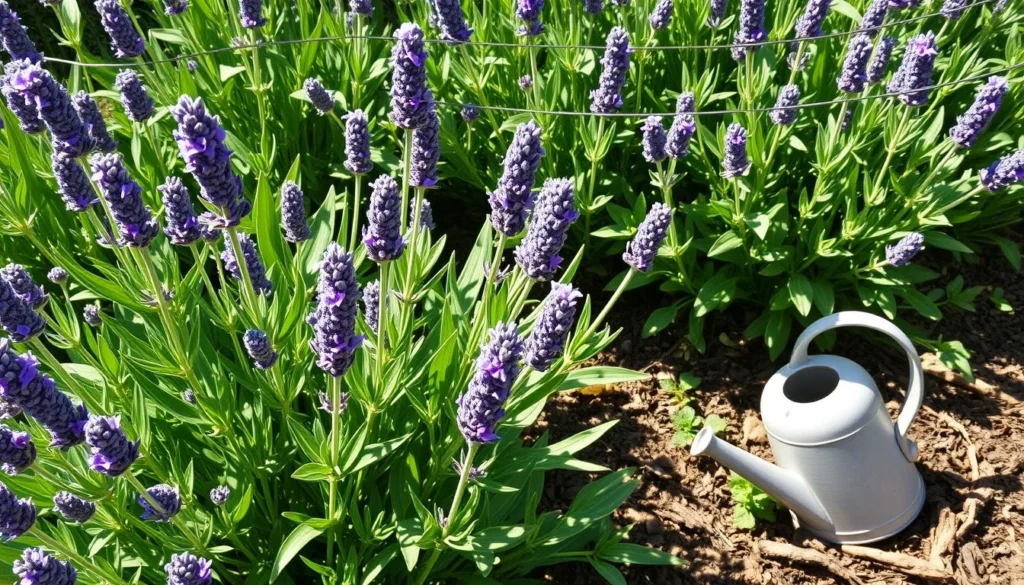
“Proper lavender care is essential for maximizing the growth and fragrance of these beloved plants.” – Horticulture Expert
Fertilizing and Mulching Lavender
Lavender plants don’t need much food and often do well without a lot of fertilizer14. If you mixed compost into the soil when planting, you might not need to add more14. But, if your lavender is in a pot, a balanced, slow-release fertilizer in early spring can help15. Too much fertilizer can make the plant grow more leaves but fewer flowers, so be careful15.
Using organic mulch like straw or wood chips around your lavender can keep weeds away and keep the soil moist14. It also makes your garden look neat14. Spanish lavender can handle richer soil better than English and French lavender15. But all types of lavender like well-draining, slightly alkaline soil with a pH of 6.7 to 7.315.
| Fertilizer Type | Recommended Use |
|---|---|
| Organic Fertilizers (e.g., composted manure, worm castings, bone meal) | Provide balanced essential nutrients for lavender plants |
| Homemade Lavender Fertilizer (Epsom salt, baking soda, fish emulsion) | Nourish lavender plants with customized nutrient blend |
| Kitchen Scraps (coffee grounds, banana peels, vegetable scraps, eggshells) | Offer additional nourishment for lavender plants |
But, coffee grounds can make the soil too acidic, which might harm your lavender15. It’s also key to water and drain well to prevent root rot in both outdoor and indoor plants15.
By following these tips, your lavender will flourish and keep its lovely scent and look14. Lavender is one of the best herbs for dry areas and can do well without fertilizer because of their natural habitat in Mediterranean regions14.
Pest and Disease Management
Lavender plants are easy to care for but can sometimes face pests and diseases. Powdery mildew is a common problem. It can be avoided by making sure your lavender plants have well-draining soil, are spaced right, and have good air flow16. Root rot is another issue, which can be prevented by not overwatering and letting the soil dry out between waterings16.
Lavender trees are hardy in USDA zones 5-9, depending on the type17. They like slightly alkaline soil with a pH of 6.7-7.317. It’s important to have good air flow to prevent fungus17. Common pests include spider mites, thrips, and leafminers17. Mature trees can get root rot, wilt, and fungus if not cared for17.
By keeping your lavender plants in the best conditions, you can avoid many problems. Lavender plants are good at handling drought and prefer less water and poor soil18. This can help prevent pests and diseases.
| Pest/Disease | Description | Prevention |
|---|---|---|
| Powdery Mildew | A fungal disease that causes a white, powdery growth on leaves and stems. | Ensure well-draining soil, proper spacing, and good air circulation. |
| Root Rot | A fungal disease that causes the roots to decay, leading to plant decline. | Avoid overwatering and ensure soil dries out between watering sessions. |
| Spider Mites | Small, sap-sucking pests that can cause discoloration and stunted growth. | Maintain healthy plants and use targeted pest control measures if needed. |
| Thrips | Tiny insects that feed on plant cells, leading to distorted growth and discoloration. | Encourage natural predators and use organic pest control methods. |
| Leafminers | Larvae that burrow into leaves, creating winding tunnels or blotches. | Monitor plants closely and remove affected leaves if necessary. |
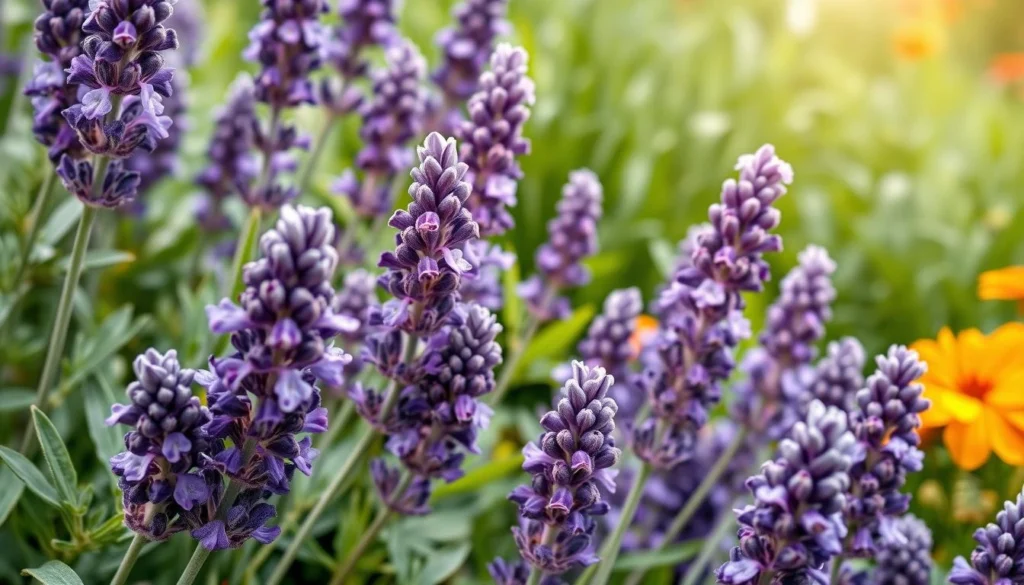
By knowing and tackling these common problems, you can make sure your lavender plants do well. They will keep giving their lovely scent and beauty for many years171816.
Growing Lavender in Containers
Lavender is a great choice for container gardening. It’s perfect for small patios, balconies, or tight outdoor spaces. Growing lavender in pots lets you enjoy its lovely scent and beautiful flowers19.
Container Selection and Soil Mix
Choosing the right pot and soil is key for growing lavender in containers. Pick a pot that’s at least 12 inches wide and has good drainage holes to avoid root rot19. Use a mix of sandy or loamy soil with perlite or sand for the best results19. Make sure your pot gets 6-8 hours of direct sunlight each day, as lavender loves the sun19.
Overwintering Potted Lavender Plants
Keeping potted lavender through winter can be tricky, but it’s doable. Choose a variety that can handle two zones colder than your area20. When it gets cold, move the pots indoors or wrap them in leaves or mulch to protect the roots19.
| Lavender Variety | Average Lifespan in Containers |
|---|---|
| English Lavender (Lavandula angustifolia) | Up to 15 years20 |
| Spanish Lavender (Lavandula stoechas) | Around 5 years20 |
| Compact Cultivars (e.g., ‘Hidcote’, Sweet Romance®, ‘SuperBlue’) | Well-suited for limited space20 |
By following these tips, you can enjoy lavender’s beauty and scent all season in your outdoor spaces1920.
Propagating Lavender from Cuttings
Lavender is a great flower to grow, and it’s easy to spread from cuttings21. If you want to grow more lavender or share it with others, learning how to propagate is key. We’ll show you how to take and root lavender cuttings for a new batch of these lovely plants.
Selecting and Preparing Cuttings
The best time to take lavender cuttings is from June to September21. Choose straight, healthy stems without pests or buds for the best chance of success21. Softwood cuttings, which are light green and soft, root faster than hardwood cuttings22.
Make your cuttings 3-4 inches long, removing the bottom leaves2123. Dipping the cut end in rooting hormone helps with root growth and success2122.
Planting and Caring for Cuttings
Plant the cuttings in a potting mix or soil, burying them up to the leaves2123. Keep the soil moist but not too wet, and place them in a warm, bright spot212223.
In 2 to 4 weeks, you’ll see new roots. Then, you can move them to bigger containers or the garden21. To check if they’ve rooted, gently tug on them – if it feels hard, they’ve rooted2123.
Be patient when growing lavender. Softwood cuttings root faster, but hardwood ones take 4 to 6 weeks2122. With the right care, you’ll soon have a beautiful lavender garden from your own cuttings.
“Lavender is one of the most versatile and easy-to-grow plants, and propagating it from cuttings is a great way to expand your lavender collection. Follow these simple steps, and you’ll be rewarded with a bountiful harvest of fragrant, beautiful lavender plants.”
Harvesting Lavender for Different Uses
When to pick your lavender is key, as it affects how you’ll use it. For bouquets, wait until half the flowers are open to show off their colors24. But, for drying or cooking, pick them when the first flowers start to open. This keeps the plant’s oils strong25. For essential oil, wait until the flowers are fully open for easier extraction26.
Timing for Fresh Arrangements
Pick lavender for bouquets when half the flowers are open. This brings out the plant’s colors and keeps the bouquet fresh24.
Timing for Dried Flowers and Culinary Uses
For drying or cooking, pick the flowers when the first ones start to open. This keeps the plant’s oils and flavor strong25. English lavender is best for cooking, with varieties like ‘Hidcote Blue’ and ‘Munstead’ being tasty25.
Timing for Essential Oil Extraction
For essential oil, wait until the flowers are fully open. This makes extracting the oils easier26.
Always pick lavender in the late morning. This is after the dew has dried but before the sun’s heat reduces the oils26.
| Lavender Use | Ideal Harvest Timing |
|---|---|
| Fresh Arrangements | When about half the flowers on the stem are open |
| Dried Flowers and Culinary | When the first blossoms begin to open |
| Essential Oil Extraction | When the flowers are fully open |
“Timing your lavender harvest is crucial, as it determines the plant’s intended use.”
Lavender Plant Drying and Storage
It’s important to dry and store your lavender right to keep its smell and color. Make sure it’s dry before you store it27. Cut the lavender in the morning to get the best harvest27. Also, trim the stems at the node to keep the plant healthy and looking good27.
Proper Drying Techniques
There are many ways to dry lavender, each with its own benefits27. You can hang the bundles upside down in a cool, airy spot. Avoid sunlight to keep the color and oils strong27. This method takes 4 to 6 weeks28.
You can also dry lavender on a screen for 1-2 weeks28. Or, use a dehydrator at 100 degrees Fahrenheit for 2 hours27. Oven drying works too, but check it every hour27. Freeze drying is the fastest, but follow your equipment’s instructions27.
It’s key to dry lavender well to avoid mold and keep it good for medicine27. The dried lavender should turn from bright green to rich brown. The stems should be brittle28.
Long-Term Storage Methods
After drying, it’s time to store your lavender. You can display the bundles or store the flowers in airtight containers28. Label the containers with the type and harvest date. Store them in a cool, dark place28. For even better storage, refrigerate or freeze the dried lavender28.
Follow these tips to enjoy your lavender’s smell and color for months27 Remember, the right drying and storage keep your lavender fresh and useful for a long time27.
Conclusion
Lavender is an amazing plant that can make your life better in many ways. It has a lovely scent and lots of benefits. By using the tips from this article, you can make your lavender plants grow well and smell great. This will turn your outdoor space into a peaceful and beautiful place29.
Lavender can help you sleep better, heal wounds, and feel less anxious29. It can also ease symptoms of premenstrual syndrome, improving your health29. Plus, lavender products might help grow your hair, making it thicker and healthier29.
Lavender is also great for your home and garden3031. Choosing the right type, growing it right, and taking good care of it will make your lavender garden amazing. It will make your space more beautiful and attract helpful insects3031. Whether you’re new to gardening or have been doing it for years, lavender is a joy to work with.


